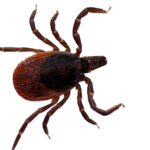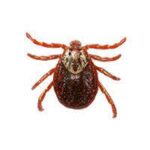 Ticks are the leading carriers of vector-borne diseases to humans in the United States, second only to mosquitoes worldwide. In most circumstances, it is not the tick bite but the toxins, secretions, or organisms in the tick’s saliva transmitted through the bite that cause disease.
Ticks are the leading carriers of vector-borne diseases to humans in the United States, second only to mosquitoes worldwide. In most circumstances, it is not the tick bite but the toxins, secretions, or organisms in the tick’s saliva transmitted through the bite that cause disease.
How to avoid getting bitten
To avoid a tick encounter, you’ll want to be vigilant about taking precautions whenever you’re spending a significant amount of time outdoors in tick territory, whether you’re hiking or mowing your lawn. Fortunately, the same prevention techniques work for all types of ticks.
1. Repelling ticks starts with your outfit. Choose long sleeves and pants if possible. Tucking your pants into your socks gives ticks less access into the areas they can bite. Spray exposed skin with a good repellent. And treat clothes likely to be worn in tick habitat ahead of time with a permethrin repellent for the greatest protection.
2. After your adventure – even if it’s just mowing the lawn – the easiest way to make sure ticks stay outside is to disrobe as soon as possible — shed all your clothes on a porch before going inside to keep any hangers-on outside if possible — jump in the shower, check for ticks and scrub. Remember that disease-carrying ticks can be tiny: at the nymph stage, when it’s likely to bite you, a black-legged tick is the size of a poppy seed. Don’t forget about pets and kids. Check them for ticks outside; otherwise, a tick can fall off a dog inside and bite you.
3. Throw discarded clothes into the dryer on high heat for at least six minutes to kill any stragglers.
What to do if you do get bitten
1. Don’t panic. It’s a hard rule to follow, but remember that not every tick carries a harmful bacteria or virus.
2. Forget the folk remedies: “Grab a pair of fine tipped tweezers, remove as quickly as possible as close to skin as you can by pulling it out in a smooth, continuous motion without twisting it. And don’t light a match or roll it in butter, as in fact, those methods often result in only partial removal.
3. Save it: Put the tick in a plastic bag in the freezer, especially if you think it may have been attached a long time, which may increase the risk of Lyme disease transmission. That way if you decide to see a doctor, they’ll be able to identify the type of tick that bit you, and even test it for disease-causing bacteria. Keep in mind, though, that you may not get infected even if the tick tests positive.
4. Watch for symptoms: A rash, headache, flu-like symptoms, and joint pain can all be signs of Lyme disease, anaplasmosis and ehrlichiosis. A stiff neck and swollen lymph nodes are associated with Lyme disease.
IF YOU HAVE SYMPTOMS: Many people with Lyme disease don’t remember getting a rash or a tick bite. So, mention your concerns to your health care provider. Blood tests may be able to detect Lyme disease after your body has developed antibodies.
If you experience experiencing problems with ticks around the outside of your home or in your business, call the experts at Universal Pest Services (610)449-0740 and schedule a free inspection today!